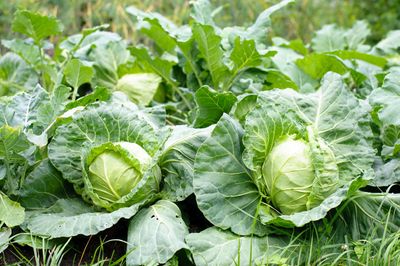Cabbage Fertilizer Basics
Enriching garden soil with organic compost is one of the best ways to supply the nutrients necessary for feeding cabbage plants. When using homemade compost, incorporate 2 to 4 inches (5-10 cm.) of compost into the garden soil in late fall or early winter. This gives the compost time to fully decay, so the valuable nutrients are ready for the plants in the spring. In lieu of using compost for feeding cabbage plants, chemical fertilizer can be added to the garden soil. Choose a balanced fertilizer, such as 10-10-10. This can be tilled directly into the garden bed as it’s being prepared for spring planting. Testing the soil before fertilizing cabbages is recommended. The test results can be used to amend the soil and make up for any nutritional deficiencies. Cabbages prefer a soil pH of 6.0 to 6.5 and require adequate amounts of micronutrients such as calcium, magnesium, sulfur, and zinc for optimal growth.
When to Feed Cabbages
When starting seeds indoors, begin fertilizing cabbage plants once they have two to four true leaves. A diluted solution of a balanced (10-10-10) liquid fertilizer, weak compost tea, or fish emulsion is recommended. This can be repeated every two weeks. Once cabbage plants have been transplanted into a prepared garden bed, continue applying cabbage fertilizer every three to four weeks until heads begin to form. Avoid using fertilizer with high levels of nitrogen, as this encourages excess foliage growth and reduced head formation.
Tips for Fertilizing Cabbages
Always follow the manufacturer’s directions when mixing and applying cabbage fertilizer. Incorporate a slow-release, granular, or pelleted fertilizer into the soil prior to planting. Switch to a liquid fertilizer or side-dress cabbage plants by burying granular or pelleted fertilizer in shallow trenches in and around plants. Heavy rainfalls can dissolve solid forms of fertilizer lying on the garden surface. This can splatter heavy concentrations of fertilizer directly onto cabbages causing leaf burn and damage to the plants. Avoid additional applications of fertilizer after cabbages begin to form heads. This can cause rapid growth resulting in split or cracked heads. Water cabbage plants before the soil dries completely. Not only do cabbage plants prefer a consistently moist soil, but water is essential for absorbing nutrients from the soil.
